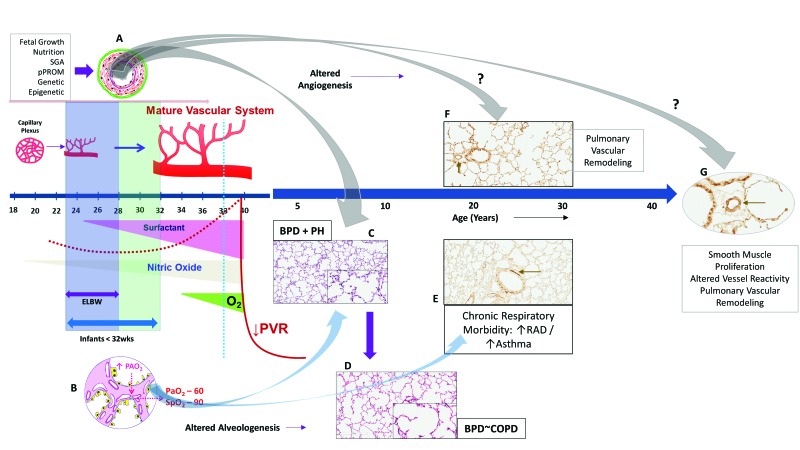Figure 6.
Fetal programing, preterm birth and pulmonary hypertension. Extremely Low Birth Weight (ELBW) infants born between 23 and 28 weeks (grey zone) are at risk for BPD and PH, as determined by lung development, fetal growth, and epigenetics. The degree of altered angiogenesis and alveologenesis determine the severity of BPD and/or PH. (A) Cross-section of pulmonary arteriole at birth in premature infant; (B) alveoli exposed to high PO2, hence higher arterial PO2; (C) BPD in mice exposed to O2 from P3–P14; (D) lungs similar to COPD/emphysema in adult mice; (E) airways with smooth muscle hypertrophy on SMA staining (arrow) in 3-month adult mice. Premature infants with BPD are at increased risk for RAD, bronchial hyper-responsiveness and asthma; (F/G) pulmonary arterioles with thickened walls on SMA staining suggesting smooth muscle proliferation (adult mice aged 3 to 9 months). The risks of preterm birth associated with late onset pulmonary hypertension in children and adults is not known in humans.

